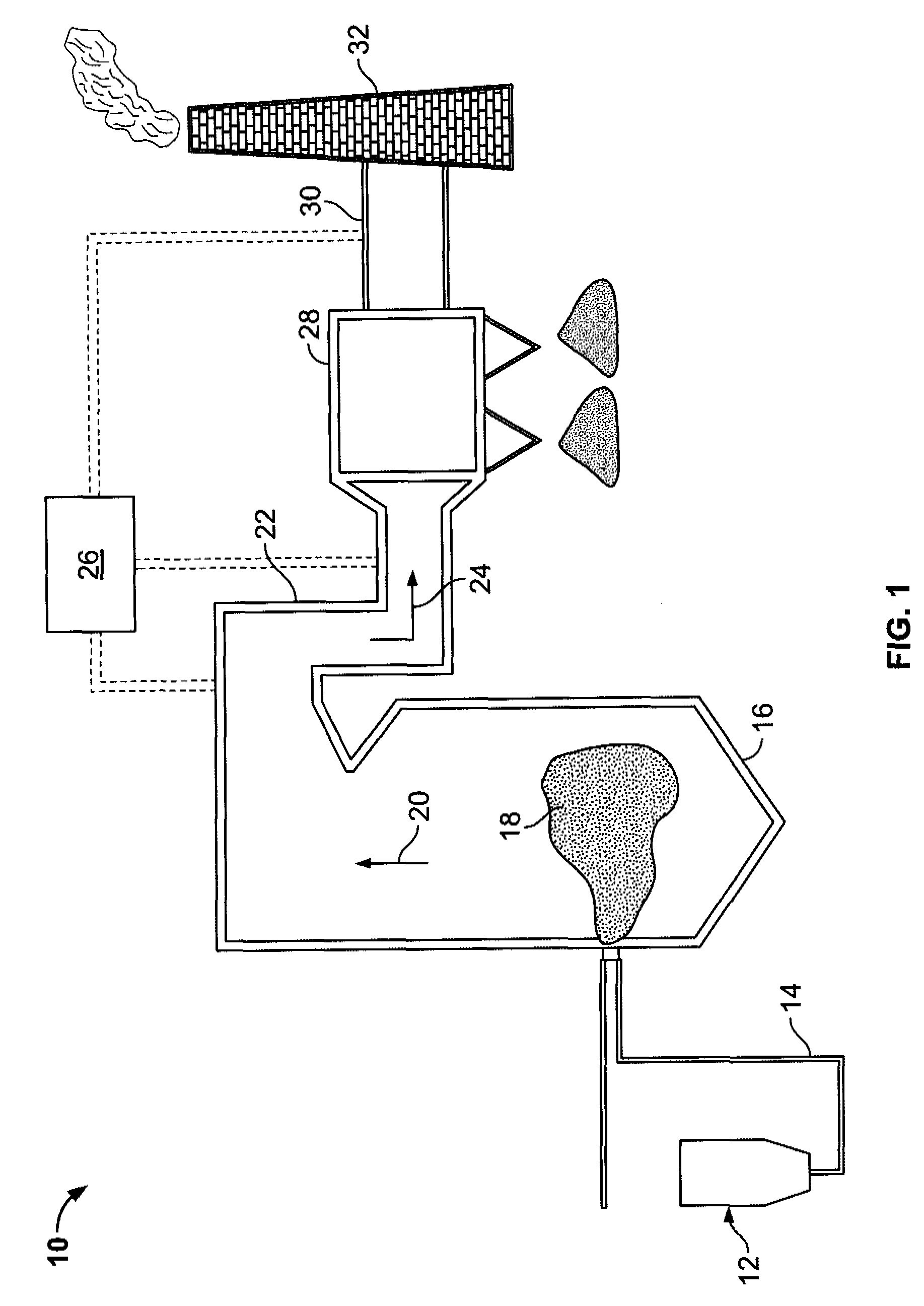Sorbents and sorbent composition for mercury removal
a technology of sorbents and mercury, which is applied in the direction of electrostatic separation, chemical/physical processes, solid separation, etc., can solve the problems of high cost of mercury control using activated carbon injection and no single available control technology can provide effective mercury reduction for all applications
- Summary
- Abstract
- Description
- Claims
- Application Information
AI Technical Summary
Problems solved by technology
Method used
Image
Examples
examples
[0034]Tests to determine the effect of activated carbon, trona, and trona / activated carbon blends on mercury removal were conducted in the 20,000 ACFM slip-stream of a stoker fired unit. The carbon-based sorbents used in the trials were activated carbon (Darco® Hg). The coal fired was a bituminous coal containing approximately 2% sulfur. The following were injected upstream from a fabric filter operating at 300° F. and at a rate of 1-4 lb / MMacf: (a) activated carbon, (b) trona, and (c) mixture of trona / activated carbon containing 5% activated carbon by weight.
[0035]The mercury concentration in the flue gas was measured upstream and downstream from the fabric filter using the Ontario Hydro method. The fly ash collected in the fabric filter had a carbon content of approximately 40% and the mercury emissions at the fabric filter inlet were approximately 12 lb / TBtu.
[0036]Tests demonstrated that the “natural” capture of mercury on fly ash in the fabric filter (determined as difference be...
PUM
| Property | Measurement | Unit |
|---|---|---|
| Fraction | aaaaa | aaaaa |
| Fraction | aaaaa | aaaaa |
| Fraction | aaaaa | aaaaa |
Abstract
Description
Claims
Application Information
 Login to View More
Login to View More - R&D
- Intellectual Property
- Life Sciences
- Materials
- Tech Scout
- Unparalleled Data Quality
- Higher Quality Content
- 60% Fewer Hallucinations
Browse by: Latest US Patents, China's latest patents, Technical Efficacy Thesaurus, Application Domain, Technology Topic, Popular Technical Reports.
© 2025 PatSnap. All rights reserved.Legal|Privacy policy|Modern Slavery Act Transparency Statement|Sitemap|About US| Contact US: help@patsnap.com


